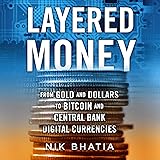The year 2020 has been a whirlwind for many, and for those watching the cryptocurrency market, it might feel like a familiar ride. Just as we witnessed a dramatic surge in Bitcoin’s value leading up to Thanksgiving in 2017, only to see it tumble shortly thereafter, we’re experiencing another significant **2020 crypto rally**. This resurgence has many investors asking a critical question: is history repeating itself, or is this time truly different? While the video above offers an excellent overview, let’s delve deeper into the core distinctions that suggest a more resilient and sustained growth trajectory for Bitcoin and the broader cryptocurrency market.
The echoes of 2017’s “crypto mania” are undeniable. Back then, retail investors—everyday individuals like you and me—were the primary drivers, eagerly buying into the hype and pushing Bitcoin’s price to nearly $20,000. However, this fervent enthusiasm was often short-sighted; when the market corrected, panic ensued, leading to a precipitous drop to around $3,000 by Christmas of 2018. This left many, including the proverbial Aunt Julie, with significant losses, underscoring the volatility driven by a market heavily reliant on individual sentiment. Yet, the current **Bitcoin rally** presents a different narrative, built on stronger foundations.
The Institutional Stamp of Approval: Fueling the 2020 Bitcoin Rally
One of the most significant shifts between the 2017 and 2020 cryptocurrency rallies is the type of investor participating. Where 2017 was largely a retail phenomenon, the **2020 crypto rally** is increasingly characterized by substantial institutional interest. These are not individuals with a few hundred dollars to spare, but rather large financial entities, hedge funds, and corporations managing millions, even billions, of dollars on behalf of their clients.
Consider the prominent figures who have voiced their support or even invested. Billionaire investor Paul Tudor Jones, for instance, has publicly stated that he allocates 1-2% of his vast portfolio to Bitcoin, likening it to investing in early-stage tech giants like Apple or Google. This isn’t just talk; it’s a strategic move from a seasoned investor who sees Bitcoin as a hedge against inflation and a valuable asset in its own right. Similarly, Stanley Druckenmiller, another legendary investor, has revealed his ownership of Bitcoin while expressing bearish views on the U.S. dollar.
Beyond individual billionaires, corporations are also making moves. Payment processing giant Square, for example, made headlines when it purchased $50 million worth of Bitcoin to hold on its balance sheet. This isn’t merely an investment; it’s a statement of confidence, demonstrating that major companies view Bitcoin as a legitimate store of value, akin to cash reserves. Bill Miller, a renowned hedge fund manager, predicts a future where “every major bank, every major investment bank, every major high net worth firm is going to eventually have some exposure to Bitcoin.” Such widespread institutional adoption would create a powerful “domino effect,” solidifying Bitcoin’s position in global finance and lending unprecedented stability to the **cryptocurrency rally**.
Why Institutional Investment Matters for Cryptocurrency’s Stability
Unlike retail investors who often have shorter time horizons and are prone to emotional selling during downturns, institutional investors typically adopt a longer-term perspective. They conduct extensive due diligence, assess macroeconomic trends, and are less likely to panic sell at the first sign of volatility. Their presence brings a level of maturity and stability that was largely absent in 2017. Furthermore, their involvement legitimizes Bitcoin in the eyes of traditional finance, paving the way for wider acceptance and regulatory clarity.
When institutions allocate even a small percentage of their multi-billion dollar portfolios to Bitcoin, the sheer volume of capital injected into the market is immense. This sustained buying pressure, combined with their long-term holding strategies, acts as a crucial support for Bitcoin’s price, helping to smooth out the dramatic peaks and troughs previously observed. In essence, the market is no longer solely swayed by the whims of individual investors; it is now underpinned by the strategic decisions of financial behemoths, making the **2020 crypto rally** fundamentally different.
Unprecedented Accessibility: Lowering Barriers to Bitcoin Adoption
The path to purchasing Bitcoin in 2017 was, to put it mildly, cumbersome. Investors often had to navigate obscure cryptocurrency exchanges, complete complex identity verification processes, and jump through numerous hoops just to acquire digital assets. This friction deterred many potential buyers, particularly those less technically savvy or wary of unfamiliar platforms.
Fast forward to 2020, and the landscape has dramatically changed. Mainstream financial platforms are now integrating cryptocurrency services, making it easier than ever for the average person to buy, hold, and sell Bitcoin. PayPal, for instance, announced in October that its vast user base could directly transact Bitcoin within their existing accounts. Square’s Cash App followed suit, offering similar services. Commission-free trading apps like Robinhood and Webull have also added cryptocurrency trading, allowing users to diversify their portfolios alongside traditional stocks and ETFs.
The Power of Convenience: Mainstream Platforms and the Bitcoin Rally
Fidelity, one of the largest brokerage firms, has even rolled out a dedicated cryptocurrency platform for institutional clients, further bridging the gap between traditional finance and digital assets. This ease of access is a game-changer. Imagine wanting to buy a pair of Nike shoes; you’d likely prefer to use your existing Amazon account rather than creating a new one on Nike’s website. The same principle applies here. When people can buy Bitcoin through platforms they already trust and use daily, the psychological and practical barriers to entry crumble.
This increased accessibility means that a much broader segment of the population can now participate in the market. It democratizes access to digital assets and broadens the investor base beyond early adopters and tech enthusiasts. The convenience offered by these established platforms drives significant retail demand, which, when combined with institutional buying, creates a powerful upward force for the **2020 crypto rally**.
Bitcoin Halving and Supply Dynamics: A Foundational Shift
One of Bitcoin’s most fundamental design features is its programmed scarcity, enforced by an event known as the Bitcoin Block Reward Halving. Every approximately four years, the reward miners receive for validating transactions and adding new blocks to the blockchain is cut in half. This mechanism is crucial for controlling the supply of new Bitcoin entering the market, mimicking the scarcity of precious metals like gold.
The third Bitcoin halving occurred in May 2020. Prior to this event, miners received 12.5 Bitcoin for each block solved; afterward, this reward was reduced to 6.25 Bitcoin. This immediately reduced the rate at which new Bitcoin could be created and introduced into circulation. Historically, the price impact of a halving event isn’t immediate but typically manifests several months later, as the reduced supply begins to clash with increasing demand. This pattern has been observed in previous halvings and appears to be playing out again in the current **cryptocurrency rally**.
The Supply Squeeze: Demand Outstripping New Bitcoin Supply
The true significance of the 2020 halving becomes apparent when considering current market dynamics. According to Pantera Capital, the demand for Bitcoin through just two platforms, PayPal and Square, is staggering. PayPal users alone are reportedly purchasing around 70% of all newly mined Bitcoin, while Square users account for approximately 40%. This implies that between these two platforms, not only is all newly mined Bitcoin being absorbed, but demand is actually exceeding the new supply coming to market. This creates a severe supply squeeze, driving prices higher as buyers compete for a shrinking pool of available coins.
This inelastic supply, combined with escalating demand from both retail and institutional investors, forms a robust economic foundation for the **Bitcoin rally**. Unlike traditional currencies that can be printed infinitely, Bitcoin’s predictable and decreasing supply makes it a compelling asset in an uncertain economic climate. The halving is not merely a technical event; it’s a pivotal moment that fundamentally alters Bitcoin’s supply-demand equilibrium, fueling its price appreciation.
Fiat Currency Concerns: The Search for a Harder Asset
The final, yet perhaps most compelling, reason behind the strength of the 2020 cryptocurrency rally stems from widespread concerns about traditional fiat currencies. Fiat money, such as the U.S. dollar or the Euro, is a government-issued currency not backed by a physical commodity like gold or silver. Its value is derived from public trust and government decree, rather than intrinsic worth. In times of economic stability, this system functions effectively. However, during crises, it exposes a critical vulnerability: the potential for unlimited money printing.
The global pandemic of 2020 triggered unprecedented monetary policy actions worldwide. In the United States, for example, estimates suggest that nearly 22% of all existing U.S. dollars were created in 2020 alone through measures like quantitative easing. While intended to stimulate the economy, such massive injections of liquidity into the financial system raise fears of inflation and currency devaluation. Investors, seeking to protect their wealth from eroding purchasing power, naturally gravitate towards assets with a limited, finite supply.
Bitcoin as Digital Gold: A Hedge Against Inflation
Just as gold has historically served as a safe haven asset during periods of economic uncertainty, Bitcoin is increasingly being viewed as “digital gold.” With a strictly enforced maximum supply of 21 million coins, Bitcoin offers a stark contrast to fiat currencies, where governments can effectively “turn on the money printers” at will. This scarcity, combined with its decentralized nature, makes Bitcoin an attractive hedge against inflationary pressures and a store of value in an environment where traditional currencies face significant challenges.
The surge in gold prices throughout 2020 alongside the **Bitcoin rally** is no coincidence. Both assets benefit from the same underlying investor sentiment: a desire for assets that cannot be debased by government policy. As fears of fiat currency devaluation persist, more investors are likely to seek refuge in assets like Bitcoin, solidifying its role in the global financial landscape and providing a strong tailwind for the continued **cryptocurrency rally**.







